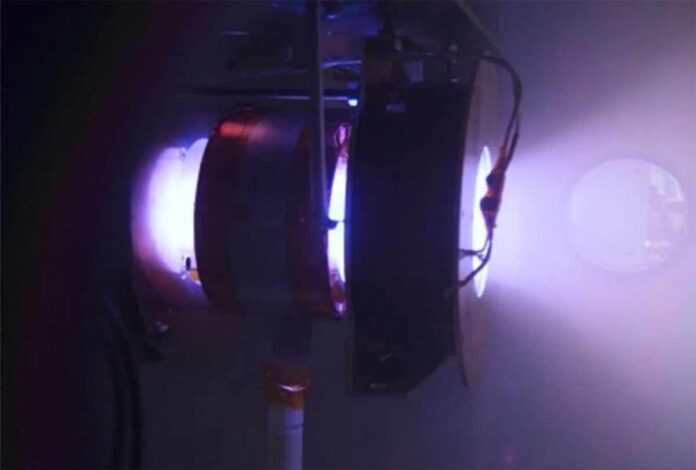A researcher at Tohoku University has improved the performance of a high-power electrodeless plasma thruster, bringing us one step closer to further space exploration.
Electric propulsion technology is enabling a comparable advancement in space. Historically, innovations in terrestrial transportation technologies such as vehicles, railroads, and aircraft have propelled historical technologies and industries.
In the electric propulsion method, an electromagnetic field is used to accelerate a fuel and produce thrust. It propels a spaceship forward. Space organisations’ development of electric propulsion technology has paved the way for future space travel.
Several successful space missions have already used electric propulsion technologies such as gridded ion thrusters and Hall thrusters. Solar power is converted into thrust energy when the propellant becomes ionised. That is a plasma, and is accelerated by electromagnetic fields. The electrodes required for these devices, however, limit their lifetime because they are exposed to and damaged by plasma. Particularly at high power levels.
However, the efficiency of the rf power to thrust energy conversion has hampered the development of MN rf plasma thrusters. Early experiments yielded conversion rates in the single digits, while more recent research yielded a modest 20% result.
Scientists have developed electrodeless plasma rockets to circumvent this. One such method employs radio frequency to generate plasma (rf). An antenna directs radio waves into a cylindrical chamber. It resulted in plasma that is channelled and accelerated by a magnetic nozzle to provide propulsion. MN rf plasma thrusters, also referred to as helicon thrusters, are simple to operate.
In a study published in Scientific Reports, Professor Kazunori Takahashi of Tohoku University’s Department of Electrical Engineering achieved a 30% conversion efficiency.
The current 30% efficiency was achieved using argon propellant. It is opposed to more advanced electric propulsion engines. It frequently uses xenon gas, which is expensive and difficult to obtain in large enough quantities. This implies that an MN rf plasma thruster would reduce the cost and demand for Earth’s resources.
“Applying a cusp-type magnetic field reduced the energy loss that normally occurs to the plasma source wall,” Takahashi explained. “This accomplishment paves the way for advances in high-power space transportation technology.”

